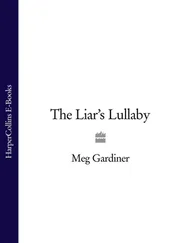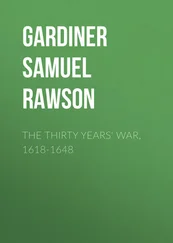In March 1930, with the number of registered unemployed standing at over 2.5 million, over a thousand men left Scotland, the Durham coalfields, Northumberland, Plymouth, Yorkshire, Lancashire, the Nottingham coalfields, the Potteries, South Wales, the Midlands and Kent to trudge, most of the way on foot, to the capital, where they were joined by the London workless. For the first time women from the depressed textile areas of Lancashire and Yorkshire made up a special — separate — contingent, in the hope that the female Minister of Labour, Margaret Bondfield, might afford their case a sympathetic hearing. This was not to be, and the only success that what Hannington called the ‘raiding parties’ had was to storm the Ministry of Health, lock themselves in and address the crowds in Whitehall below, until they were forcibly ejected.
In the days after the formation of the National Government in August 1931, protest had escalated, often ending in pitched battles between the unemployed and the police, with the protesters reported as having thrown stones and hammer heads, and attempting to pull the police from their horses, while the police allegedly laid about the protesters with batons. By the end of the year over thirty different towns and cities had seen clashes between the police and unemployed demonstrators. ‘This “cuts” business may bring the Empire down,’ predicted Samuel Rich, a London teacher who had spent time in September 1931 working out his family’s annual budget in anticipation that ‘JRM [Ramsay MacDonald] will reduce all teachers’ salaries by 15% by Order in Council’. Philip Snowden, who had translated his job as Chancellor into the National Government (until the election in October 1931), announced in his budget on 10 September that not only unemployment insurance benefit would be slashed by 10 per cent, but so would the pay of teachers, the police and the armed forces.
Articles had started to appear in the Manchester Guardian in the 1930–31 school year highlighting the plight of out-of-work teachers, and it was not long before suggestions were being made that the already very small number of married women teachers might be ‘let go’. Although 10,000 teachers marched through the streets of London in protest on 11 September 1931 (members of what Hannington referred to triumphantly as ‘the black-coated proletariat … embarking on a new experience, marching through the streets carrying banners’), Samuel Rich was appalled at what he regarded as the supine acquiescence of his profession. ‘The “L[ondon] T[eacher]” and other teachers’ papers all sickening today. The 10% cut is a victory! A victory! What lice! I hear that only 218 London schoolmasters voted to be absent yesterday after the meeting. 218! — Bah!’.
As well as demonstrations and clashes with the police over the following months there was one response that was unprecedented — and more disturbing to the government than that of the ‘black-coated proletariat’ — the incident that Samuel Rich thought ‘might bring the Empire down’, and which gave an added twist to fears about Britain’s stability at the moment of acute economic crisis. ‘The Atlantic Fleet has been recalled owing to dissatisfaction among the sailors,’ Rich reported. ‘They’ll get redress tho’ as they are at the right end of the guns.’ The largest ships of the North Atlantic Fleet had been gathering in the Cromarty Firth for their annual autumn exercises when the news of the cuts came through — not from official sources such as the Admiralty Board, but piecemeal via newspaper reports and rumours. The cuts were not only swingeing, they were not equitable, and bore most heavily on the lower ranks, as an across-the-board cut of a shilling a day would mean only 3 per cent off the pay of a Lieutenant Commander, while an Able Seamen between the ages of twenty-two and twenty-five would suffer a reduction of 25 per cent. This, a senior officer immediately realised, was ‘perfectly absurd’. Six shillings week less money would mean real hardship to the men’s families: furniture would be repossessed, clothes and shoes would not be replaced, some families might be evicted, others go short of food. Alan Drage, a Lieutenant Commander on board HMS Valiant , was never able to forget ‘the queue of dismayed sailors outside my cabin door, each brandishing a sheet of paper covered with elaborate and meticulous calculations, which were explained to me in the utmost detail, each interview concluding, “You see, Sir, I can’t possibly manage on this; what am I going to do?”’
In the canteens, which were for the lower orders only, discontent was growing: Len Wincott, an Able Seaman aboard the cruiser HMS Norfolk , jumped on a table and called for a strike ‘like the miners’, but since setting out on a march to London didn’t make any sense, it would have to be passive resistance, a sit-down strike. Seamen had long been denied any effective channels of complaint such as a trade union, and were forbidden to communicate directly with their MP to express any grievances about the navy that they might have. But of course any mass resistance by His Majesty’s Forces was mutiny — though none of the sailors used that word — in this case ‘mutiny not accompanied by violence’, but mutiny nevertheless, for which the punishment was death. If the seamen were anxious not to label their actions mutiny, nor was the Admiralty: the Royal Navy was the symbol of Britain’s prestige around the world, and rarely had that prestige been more at risk, with an acute financial crisis, a run on gold, and foreign anxieties about the stability and resolve of the British government. The words used were ‘disturbance’ and ‘unrest’. The National Government approached newspaper editors requesting them not to mention Invergordon at this sensitive time for the country. But Ritchie Calder, then a young journalist on the Daily Herald , did not feel constrained by such discretion, and the Herald ran the story.
On Tuesday, 15 September at 8 a.m. most of the stokers on the battleship HMS Valiant refused the order to sail from Invergordon on the edge of the Cromarty Firth to take part in exercises in the North Sea, and the crews aboard the battleships Rodney and Nelson and the battle cruiser Hood followed suit, all refusing to move. Over the following thirty-six hours most of the 12,000 men on the twelve ships at Invergordon refused orders.
The Admiralty appeared to be completely out of touch with the situation, taking hours to reply to any communications from the officers, reiterating that in effect every man must do his duty, and it was not until mid-afternoon on Wednesday, 16 September that the order came that ships were to return to their home ports and cases of hardship would be looked into. The strikers’ resolve began to crumble, and by that night the ships started to put to sea. The nearest Britain ever came to a Battleship Potemkin moment in modern times was over. There were those in the Admiralty, and indeed some naval officers, who portrayed the strike as a mutiny and put it down to ‘Bolshevik agitators’ — a charge that was perhaps easier to sustain when Able Seaman Wincott, discharged from the navy, joined a front organisation of the Communist Party which capitalised on the ‘mutiny’ and his claims to have ‘led’ it. Another leader, Fred Copeman, who was not a member of the Communist Party at the time, became a fellow traveller and active in the unemployed movement and later in Spain. But although twenty-four ratings were discharged — though not until after the 1931 general election — the Admiralty was unable to establish that the events were anything more than the spontaneous actions of a large number of deeply disaffected men, denied any legitimate channels of complaint or redress and faced with a seemingly uncomprehending, unsympathetic and unresponsive Admiralty Board. On 21 September 1931, the same day Britain came off the Gold Standard, the government announced that there would be no pay cuts of more than 10 per cent.
Читать дальше












